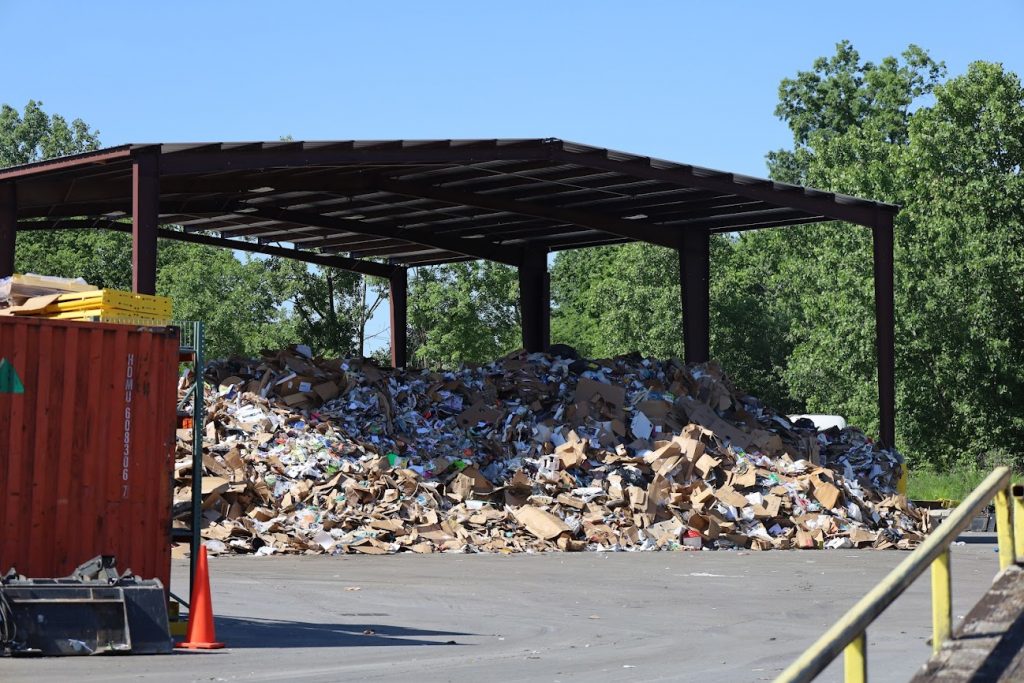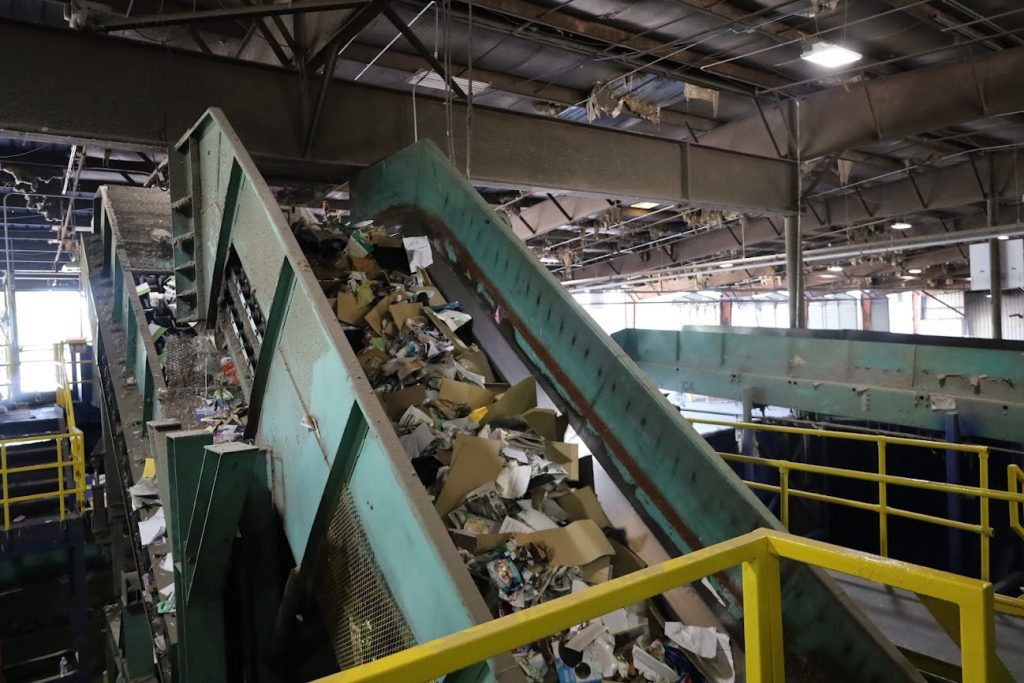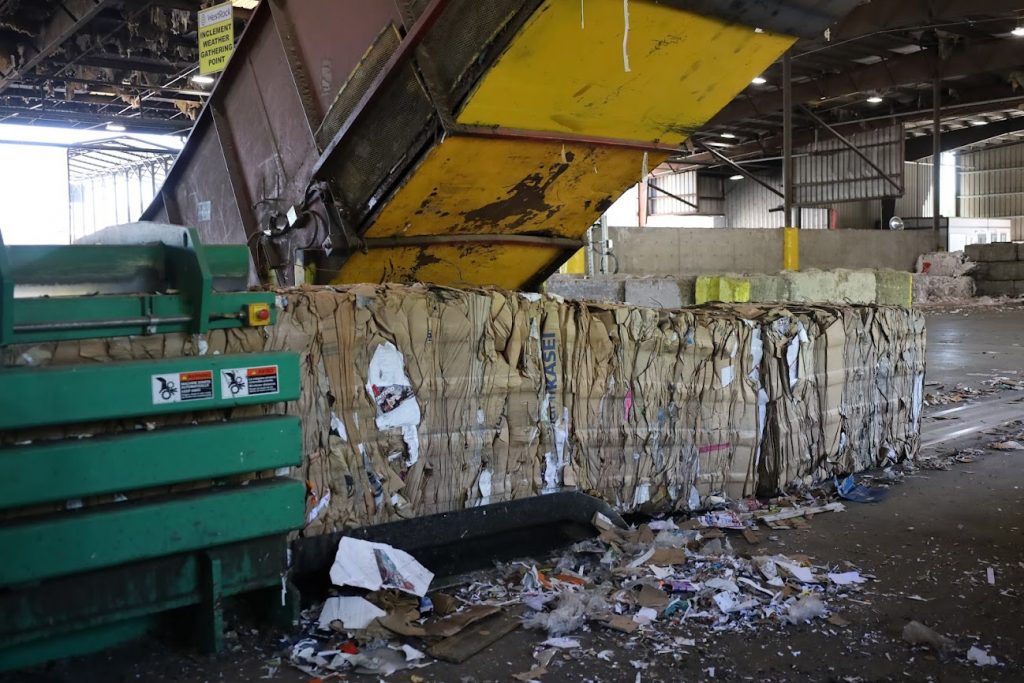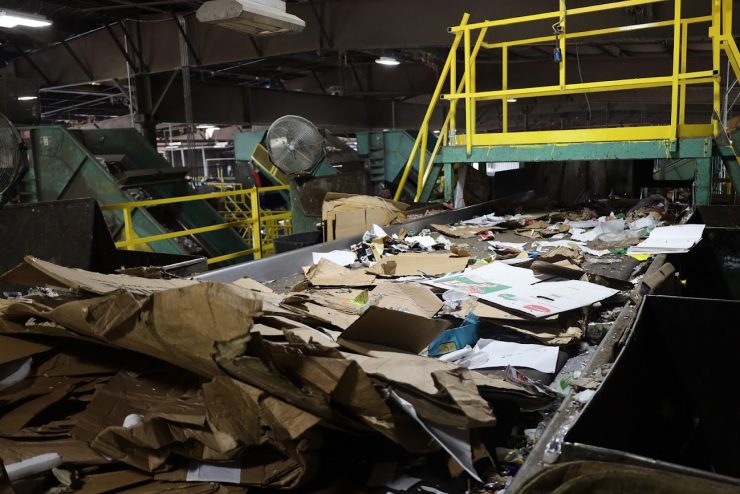What materials are actually recycled? How exactly does recycling work?
There was a time not so long ago when, if I had a piece of plastic that needed to be thrown away, I would toss it in the recycling bin and give myself a pat on the back for a job well done because at least I’m recycling. But was I recycling right?
As UK Recycling’s new content creator, it was important to go see for myself just where our recycling winds up. This month, I toured the WestRock Recycling Center in Louisville, KY, which is where UK Recycling sends their general mixed recyclables. The purpose of this center is to intake, sort, and process all recycling submissions.
The tour officially began in a presentation room, where we discussed some recycling infrastructure and the WestRock model in particular. After the information session, it was time to see the system in action.
Guided by WestRock team member, we donned a hard hat and hi-vis vest to explore the center. To say the experience was eye-opening would be an understatement.
A few things struck me on arrival. One, the deafening roar of top-of-the-range machinery. Two, the high number of staff manually handling what the machines might miss, and three, the shocking amount of non-recyclable material being put in people’s recycling bins. The sheer volume of stuff is a sight to behold. WestRock receives an average of 14,000 tons of recyclables per month, about 60 tons of which come from UK Recycling.

At the back end of the facility entrance, I noticed massive piles of baled paper, scrap metal, and freight cars covered in graffiti. WestRock uses a local train track to efficiently transport materials to vendors and other WestRock properties, which I thought was neat because I never really visualized where recyclables go after they leave the bin, much less how they are sent from place to place.
Perhaps the most exciting part of the tour was when I got to view the tipping floor, watching the collection trucks tip their cargo out while a bulldozer-style truck feeds the material into a giant conveyor belt that travels up to the sorting equipment. Be prepared for loud popping noises as the trucks drive over plastic containers, glass bottles, and other items!
Westrock is a cacophonous maze of efficiency, with a variety of large, complex machines that sort and separate materials so they can be sold and turned into new goods. As the items advance, they bump against a spinning cylinder that spreads the waste onto another conveyor belt. Sometimes we put the wrong stuff into our recycling bins. So, while the materials are whooshing by on the conveyor belt, quick-fingered workers remove items that could harm the machines.

I quickly learned that there are a lot of things you may think can be recycled but can’t. Knowing what can be recycled (and just as importantly, what can’t be recycled) in your city is essential to improving the operations of your local Materials Recovery Facility (MRF), as well as ensuring that items that cannot be recycled curbside—such as styrofoam, food, and liquids—are being taken to the right place. That is why educating people about what can and cannot be recycled is so crucial.
One of the last steps in the sorting process uses something called an Eddy current. Aluminum and plastic containers are the last items on the belt. The Eddy current creates a repelling magnetic field of sorts that “pops” aluminum off of a conveyor belt across a gap, and into a container. The rest of the materials, plastic (which is unaffected by the Eddy current) fall into the gap and onto the next conveyor.
The separated cardboard, paper, glass, steel, aluminum, and plastic are baled and eventually sold to other facilities that will turn them into recycled products. The non-recyclable items are sent to a landfill.

It was an illuminating visit, teaching the basics of waste management and the particular practices followed at Westrock. Most of all, I learned that it’s important to recycle correctly! Items that don’t belong in the recycling can damage sorting machinery, causing delays. Also, when the wrong materials get mixed in with the right ones, it reduces the value of other recyclables that were sorted correctly.
The more we recycle correctly, the less stuff winds up in our landfills.
For a behind-the-scenes look at recycling at WestRock, check out this video. WestRock also manufactures cardboard boxes from recycled cardboard. This video shows their recycling and manufacturing process.
Sarah Meade is the new Content Creator for UK Recycling.

If you’re ever unsure what to do with an item, please check the rules of your local collection service. CLICK HERE to visit our website and find out what’s recycleable at the University of Kentucky!



























